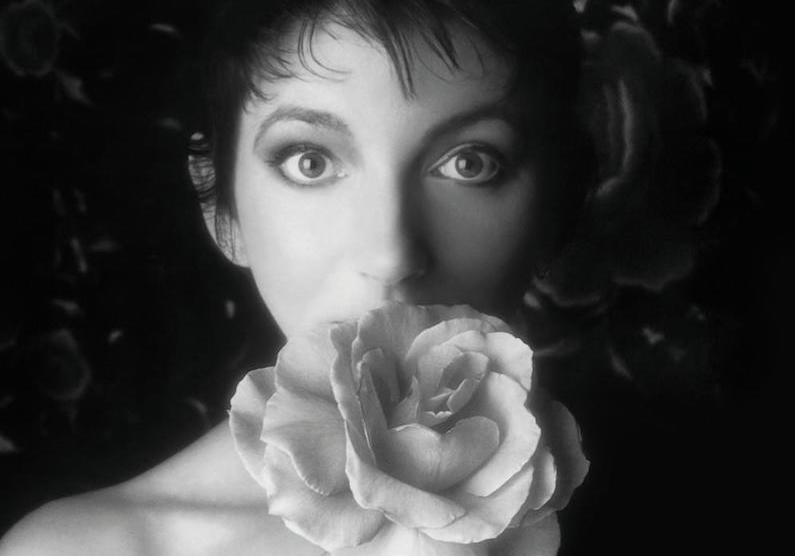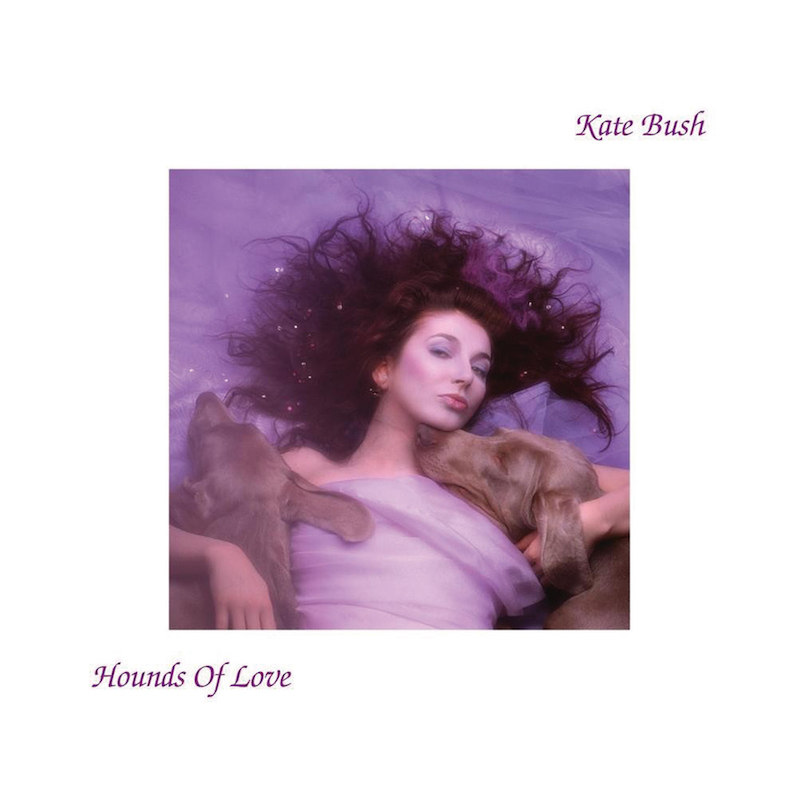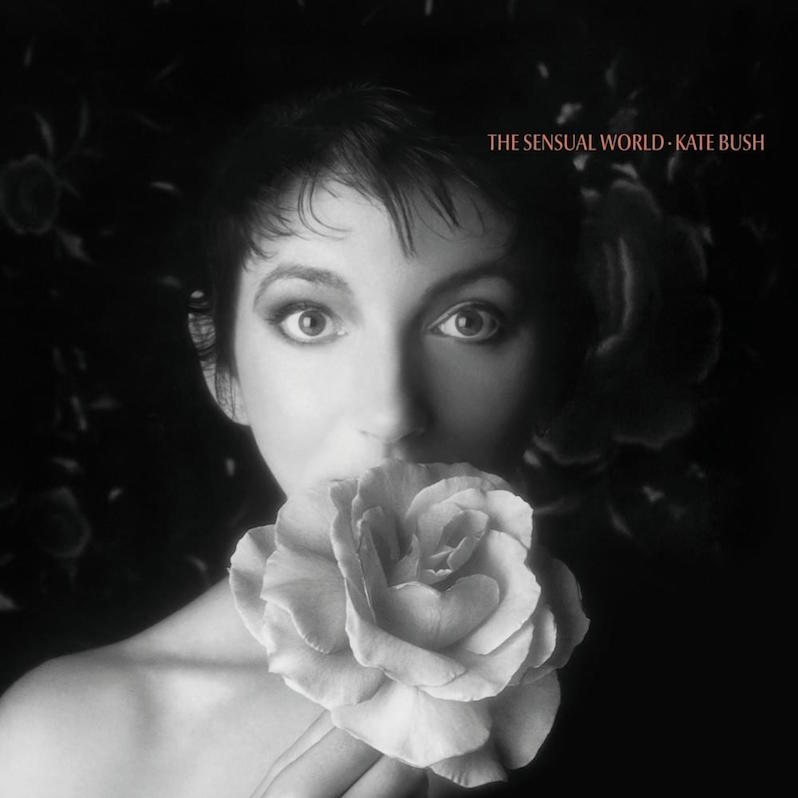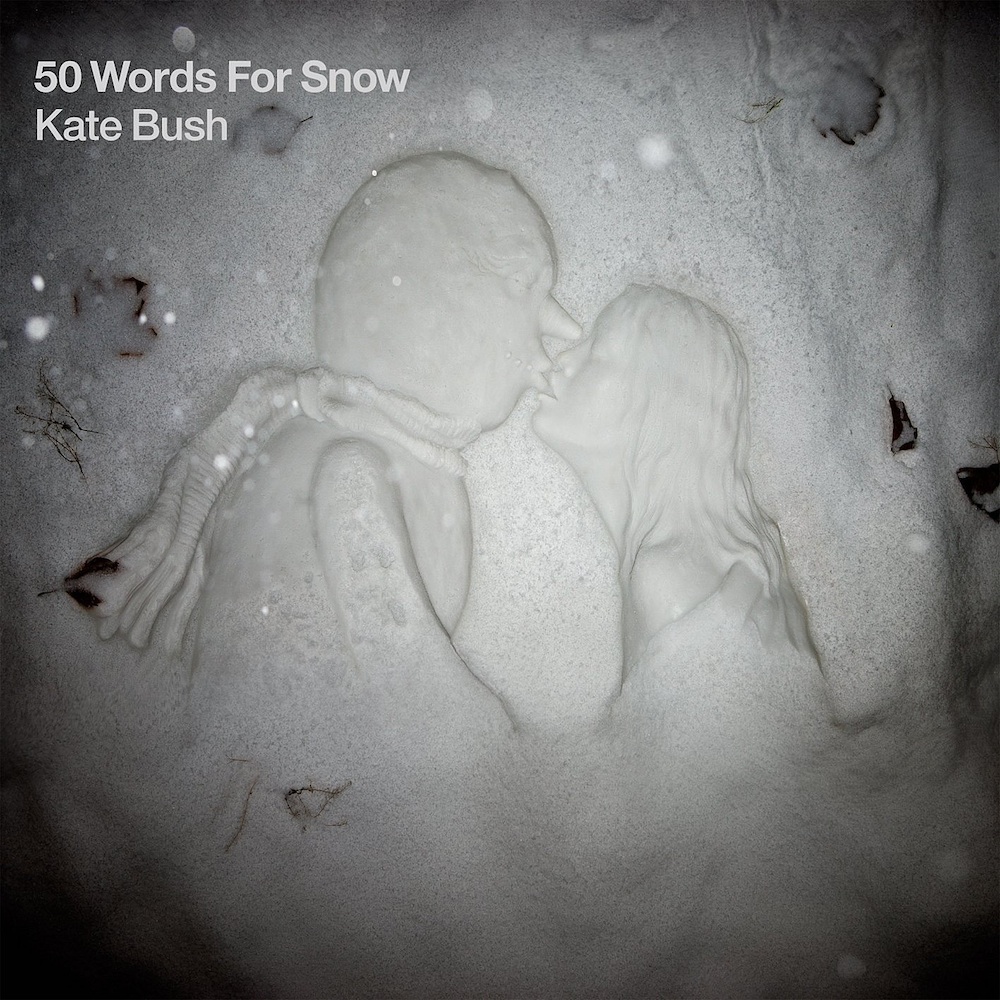Celebrate the Catalog: Kate Bush

Kate Bush is many things: a powerfully expressive singer, a prolific and talented songwriter, a proud mother, a perfectionist producer and a unique and singular artist on the whole. She’s been known to perform emotional and delicate ballads built on nothing more than a piano and her voice, so it’s no surprise that so many artists have drawn such a huge influence from her music, from Tori Amos to Radiohead, Björk and Bat For Lashes. Yet she’s been just as frequently known to craft a massive art pop production so booming that even more stylistically divergent artists such as Big Boi and And You Will Know Us From The Trail of Dead draw inspiration from her music as well. From 1978 through the ’80s, Bush released new albums in regular intervals, though after releasing 1993’s The Red Shoes, she took a long break and devoted more time to her family, though she didn’t stop writing music.
Last year saw Bush at the peak of a new streak of inspiration, having released two albums, The Director’s Cut and 50 Words For Snow, the latter in particular revealing the artist at the top of her game even after a long period of quiet. This seems an opportune time to revisit her work, particularly all ten of her studio albums, and her intriguing and impressive progression as an artist.
1978-1985: Running Up That Hill
 The Kick Inside
The Kick Inside
(1978; EMI)
Kate Bush is comparable to David Bowie in a number of ways. Though Bowie is older and has a more extensive discography, they’re both artists who have evolved and grown more intriguing over time. And they’re also artists that seem ageless, the albums recorded in their 40s sounding very much in step with those recorded in their 20s. However, Bush was all of 19 years old when her debut album The Kick Inside was released. Yet you’d hardly guess as much, considering how sophisticated a collection of songs it is. Its two most well known tracks, “Wuthering Heights” and “The Man With the Child In His Eyes,” are both gorgeous and elegantly arranged art pop pieces that show a maturity beyond her years at this stage. That said, the giveaway to her youth is in her voice. Bush has always possessed an awe-inspiring set of pipes, and she can deliver either an operatic chirp or a guttural growl without breaking a sweat. Here she sounds just a little bit higher pitched, though impressively captivating in her abilities all the same. Production-wise, The Kick Inside is not quite as booming as her work in the years to come, and instead contains a warm, uniquely ’70s sound reminiscent at times of both Roxy Music and Fleetwood Mac. On an interesting note, the album had different cover art for different markets. In the United States, the LP depicted a simple picture of Bush, clad in a pair of jeans and bright red socks. The UK, meanwhile, displayed a decidedly flashier image, with Bush flying on a kite in front of what looks like a giant eyeball. I’d say the UK wins that one.
Rating: 9.0 out of 10
 Lionheart
Lionheart
(1978; EMI)
Released only six months after debut album The Kick Inside, Kate Bush’s second album Lionheart has a reputation of being somewhat rushed, and considerably less memorable than its predecessor, or many of its successors for that matter. It’s not a bad album, not by a hefty margin. Texturally, atmospherically, it has a lot to offer. It’s beautiful in its eccentricities, but its primary failing is that it feels somewhat incomplete, not as fleshed out as it could have, or should have been. The standouts still pop, from the opening “Symphony In Blue” to the ecstatic quirk of “Wow” and the album’s best track, “Hammer Horror,” which closes the album with a big and bright production, standing in stark contrast to the remainder of the record because it feels so whole, so incredible as a solitary unit. The rest of the songs, all quite lovely, tend to get lost in a lovely fog (notable exception: the goofy “Coffee Homeground”), but such is the nature of the circumstances under which it was recorded and released. Bush apparently wasn’t as pleased with the album either, though in retrospect it had a lot of promise. And it’s not like she didn’t make up for it later.
Rating: 8.0 out of 10
 Never For Ever
Never For Ever
(1980; EMI)
As Kate entered the ’80s, her music started to shake some of the earth-tone ’70s rock sound that marked her first two records, while starting to adopt some of the more ethereal new wave art pop sounds that would come to mark her most iconic works. It’s not a complete transition – “Wedding List” still sort of sounds like a Fleetwood Mac song – but there’s a definite shift happening on Never For Ever, an album that stands as a vibrant showcase for all of her infectious eccentricities. It also produced a handful of top 20 singles in the UK for Bush, with the chant-along classic “Babooshka” even going top five. And that track should have been a clue to the kind of range she covers throughout, for at the time this was undoubtedly her most diverse release to date. The gorgeous “Delius” is an exercise in exotic dream pop, while on a complete change of course, she takes on blistering Patti Smith-style punk on the high energy “Violin.” In a pattern that shows up fairly consistently throughout Bush’s career, against the more common trend in popular music, two of the album’s singles and standout tracks are placed right at the end. The waltzing “Army Dreamers” is a subtle and twinkling ballad, whose seeds have sown more recently in the music of Joanna Newsom. And “Breathing,” another top 20 single and the longest song on the album, is also the album’s most heroic ballad. That the album is all over the place is what makes it stand out in her catalog, yet it’s also what keeps it from being one of her best. But she was on an upswing here, and that momentum would only continue to quicken.
Rating: 8.6 out of 10
 The Dreaming
The Dreaming
(1982; EMI)
From the beginning, Kate Bush had been working with big sounds and big ideas, making statements that seemed pretty huge for a 19-year-old singer/songwriter. Over time, though, those only got bigger, and by the time she released her fourth album, The Dreaming, she was entering the most ambitious and dramatic period of her career, spurred by her first turn in the producer’s chair. From the opening tom tom booms of “Sat In Your Lap,” everything sounds more exclamatory and huge. That’s how you start a record, with massive drums and jarring shrieks, and jagged hooks, and syncopated rhythms. This may not have been her most commercial record, though that song’s video is pretty unforgettable. But it was definitely the beginning of a three-album streak of outright masterpieces. And deeper into The Dreaming one goes, the more curious delights he or she shall find. Bush exaggerates her English accent on the bank heist tale “There Goes a Tenner,” delivers a darkly percussive stunner on “Pull Out the Pin,” waltzes fancifully on “Suspended in Gaffa,” slinks into gothic atmosphere on “Leave It Open,” and takes a turn for the terrifying on “Get Out of My House.” Bush took great care to push everything to a new limit on The Dreaming, and as a result its one of her best. But only three years later, she’d move the goalposts that much further and offer up her crowning achievement.
Rating: 9.3 out of 10
 Hounds of Love
Hounds of Love
(1985; EMI)
One cannot understate the importance, nor the sheer triumph of Hounds of Love. It’s Bush’s most successful, most heralded and most beloved album for a reason: it’s perfect. And it’s more than just an album with no bad songs, or even an album consisting only of great songs; it’s remarkably cohesive, dazzlingly intricate, and above all, it sounds amazing. From the massive sonic plunge of “Running Up That Hill,” the listener is treated to 46 minutes of the most ambitious and beautiful pop music recorded in the last 30 years, or ever, really. In a move that she would repeat later on, Bush splits the album into two conceptual halves of sorts, “Hounds of Love” and “The Ninth Wave.” The latter is the more arty and abstract of the two, as best displayed in the wonderfully bizarre “Waking the Witch.” Just about any track here could be named as a highlight, not the least of which are the stunning ballads “Mother Stands for Comfort” and “And Dream of Sheep.” But it’s hard not to draw attention to the three big singles. The title track is the most concise and energetic of the three, exploding with passion, while “Cloudbusting” is more subdued in tone, though no less gigantic in sound. The video, many will remember, featured the one and only Donald Sutherland in a starring role. And then there’s “Running Up That Hill,” which was Kate’s only Top 20 hit in the United States, and her biggest single to date. It’s catchy, certainly, but contains so much depth that it almost seems like a coup to have become such a massive hit. It was also one of our top 20 favorite songs of the ’80s, so there’s that. To try to sum up just how much ground Bush covers in a scant 46 minutes on Hounds of Love in a mere paragraph is probably a fool’s errand. But I’ll say this: It’s an album as awe-inspiring now as it was when it was released, and will remain so long after.
Rating: 10 out of 10
1989-2011: This Woman’s Work
 The Sensual World
The Sensual World
(1989; Columbia)
It might not be totally accurate to say that The Sensual World is the work of Bush’s that comes closest to her masterpiece, Hounds of Love. She’s made some pretty incredible music since the beginning. But it’s also not totally wrong either. The follow-up to her colossal 1985 work, The Sensual World makes good on its titular promise with some truly steamy material leading off the album on the title track. Based on a monologue from James Joyce’s “Ulysses,” “The Sensual World” is a moody, yet jaw-dropping paean to sexual congress that’s never obscene, but gets its message across through repeated refrains of “mmm yes” and a sensual, synth-laden atmosphere. As per usual, however, Bush covers a lot of ground. With some guitar from Pink Floyd’s David Gilmour, she delivers a mighty rock anthem in “Love and Anger,” and she revisits the distance between sexes, as originally explored on “Running Up That Hill,” on the stunning “Between a Man and a Woman.” Toward the album’s close is situated one of Kate’s most tender, moving ballads, “This Woman’s Work.” Delicately beautiful, it’s probably known best by many for being featured in the John Hughes film She’s Having a Baby. But it’s also just an amazing three and a half minutes of music. It’s hard to argue against the album being one of her best.
Rating: 9.2 out of 10
 The Red Shoes
The Red Shoes
(1993; Columbia)
No stranger to collaboration, Kate Bush has worked with the likes of Peter Gabriel, David Gilmour and Elton John throughout her career. Yet nowhere in her discography is the list of guest musicians as exhausting as it is on 1993’s The Red Shoes. Among the artists contributing to the album are Eric Clapton, Jeff Beck, Prince, Procol Harum’s Gary Brooker, composer Michael Kamen, comedian Lenny Henry, Trio Bulgaria and Bush’s own brother, Paddy. Though this, hypothetically, could have ended up something as epic, or even more so, than anything Bush had ever done, the reality is more a case of too many cooks spoiling the broth. Well, perhaps that’s too harsh; we’ll call it “watering down” the broth. No doubt, there is strong enough songwriting here, if not necessarily outstanding, though a handful of tracks are definite keepers. “The Song of Solomon” finds Bush going Old Testament, with a series of Biblical allusions leading up to the exclamatory chorus, “Don’t want your bullshit/ I just want your sexuality.” The title track as well ranks as a peak on the album, primarily for its energy and production that sounds current today (for a more recent analogue, match up the similarities with Animal Collective’s “Summertime Clothes”). And “Why Should I Love You?”, Bush’s collaboration with Prince, is a winning combination, though it mostly just sounds like early ’90s Prince with Bush’s vocals. The Red Shoes is the only album Kate Bush released in the 1990s, and for that reason it sounds more than a little dated at parts, like the glossy funk production of “Rubberband Girl,” or the lighthearted earworm calypso of “Eat the Music.” There’s great diversity here, and certainly a lot of big statements, but nothing so moving as on the albums that preceded it, nor anything as beautiful. Based on later actions, Bush must have agreed, for several of the songs were re-recorded for her recent collection The Director’s Cut.
Rating: 7.3 out of 10
 Aerial
Aerial
(2005; Columbia)
A long twelve years passed until Kate Bush finally released her follow-up to 1993’s The Red Shoes. Yet the upside for patient fans was the wealth of material it contained. Her first double album, 2005’s Aerial is split into two separate halves, A Sea of Honey and A Sky of Honey, kind of like Hounds of Love, but much longer. Inspired by motherhood and an increasingly more domestic lifestyle, Aerial is a work of poetry in everyday life. She writes an ode to her son, which is named “Bertie,” after him, and turns the tumbling of clothes in a washing machine strangely erotic in “Mrs. Bartolozzi.” But she still puts together an impressive full band arrangement that tantalizes the senses on “How to Be Invisible” and “King of the Mountain,” the latter of which examines the myth of Elvis Presley. The album’s second half, A Sky of Honey, is actually a seamless conceptual suite that focuses on a single 24-hour period, though it behaves much like a typical Bush album, with movements that traverse from sparse balladry to ethereal pop and jazzy arrangements. It’s a lengthy album, and might be best listened in halves, but it’s an altogether strong work that finds Bush sounding both current and timeless, as always.
Rating: 8.8 out of 10
 The Director’s Cut
The Director’s Cut
(2011; Noble & Brite)
From time to time, many a great artist will decide to tinker with their own material, deconstructing and reconstructing established work that they were never satisfied with, and the results are usually mixed. That certainly holds true for the material that Kate Bush decided to revisit on The Director’s Cut, which finds some songs with new arrangements, and some completely re-recorded, though many elements have been left alone. For this album, Bush selected four songs from The Sensual World and seven from The Red Shoes to rework, and considering how much of a studio perfectionist she is, it’s not surprising that the album falls heavily on songs from the latter. But The Sensual World, one of her best albums, probably should have been left alone. The title track from that album, presented here as “Flower of the Mountain,” is included because the estate of James Joyce reversed its original decision not to let her use Molly Bloom’s soliloquy from “Ulysses,” however, here its missing the expressive flash and drama of the original, and loses some of what made it so wonderful in the first place. Still, there are some interesting updates, such as the fiery funk rock of “Lilly,” the Stones-style rock riffs of “Rubberband Girl,” and the Auto-Tuned voice of her son Bertie on “Deeper Understanding,” which gives a more robotic sound to the computer with whom she converses. Then again, some songs would have been best left as they were, such as “This Woman’s Work,” which is perfect in its 1989 recording, but a little flat here. And “The Red Shoes,” while perfectly fine in this reworking, has a little more energy in its original recording. So, the album is both a success and a failure, in that it removes the most dated elements from many of the songs, but also some of the excitement in the process.
Rating: 7.0 out of 10
 50 Words For Snow
50 Words For Snow
(2011; Fish People/Anti-)
Prior to 2011, the only year in which Kate Bush released two albums was 1978, so credit is due to for her new prolific streak following some long intervals between new releases. Yet while The Director’s Cut was an inessential, though interesting enough album, the same cannot be said of 50 Words For Snow. Her best album since 1989’s The Sensual World, its one of her most abstract and conceptual, exploring myths and legends surrounding topics such as the Yeti, two lovers who seem to keep missing each other in various reincarnations, and a girl who haunts Lake Tahoe. Oh, and sex with a snowman. Let’s not forget that one. Divorced from the music itself, these concepts are intriguing enough topics, but when combined with Bush’s achingly beautiful arrangements, they become enchanting and heartbreaking. The melting of the snowman in “Misty” is tragic, rather than comic (though certainly Bush appreciates the absurdity). And the personification of a snowflake in “Snowflake” is breathtaking in its simplicity. An album of this quality is worth waiting six years for.
Rating: 9.0 out of 10
Jeff Terich is the founder and editor of Treble. He's been writing about music for 20 years and has been published at American Songwriter, Bandcamp Daily, Reverb, Spin, Stereogum, uDiscoverMusic, VinylMePlease and some others that he's forgetting right now. He's still not tired of it.


 The Kick Inside
The Kick Inside Lionheart
Lionheart Never For Ever
Never For Ever The Dreaming
The Dreaming Hounds of Love
Hounds of Love The Sensual World
The Sensual World The Red Shoes
The Red Shoes Aerial
Aerial The Director’s Cut
The Director’s Cut 50 Words For Snow
50 Words For Snow